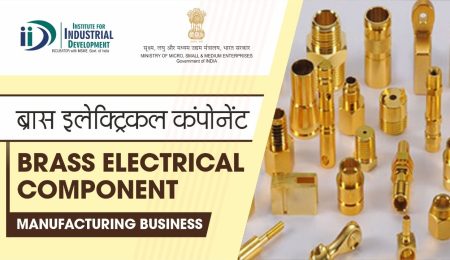The construction and maintenance of railway tracks are fundamental to the efficient and safe operation of railways. Various components work together to ensure the stability, durability, and functionality of railway tracks. This article delves into the essential components of railway tracks, namely sleepers, ballast, rail fastening systems, fishplates, bolts, and joggled fishplates, explaining their roles and importance.
Sleeper
Description: Sleepers, also known as railroad ties in the United States, are horizontal supports that lay beneath the railway rails. They are traditionally made from wood but can also be constructed from concrete, steel, or composite materials.
Use: Sleepers serve several crucial functions:
- Support: They hold the rails upright and maintain the correct gauge (the distance between the rails).
- Load Distribution: Sleepers distribute the weight of the passing trains from the rails to the ballast and subgrade.
- Stability: They provide stability and maintain the alignment of the tracks by holding the rails in place.
- Electrical Insulation: In some track systems, they also provide electrical insulation for signal systems.
Ballast
Description: Ballast consists of coarse, angular stones or gravel that is laid beneath and around the sleepers.
Use: The ballast has multiple important functions:
- Load Bearing: It distributes the load from the sleepers to the subgrade.
- Drainage: It facilitates effective drainage of water, preventing water accumulation that could damage the track structure.
- Stabilization: Ballast maintains track stability by resisting track movement caused by train forces.
- Vegetation Control: It helps prevent the growth of vegetation that could interfere with track operations.
Rail Fastening System
Description: The rail fastening system is a collection of components used to attach the rails to the sleepers. It typically includes rail clips, baseplates, and fasteners.
Use: The rail fastening system ensures:
- Secure Attachment: It firmly holds the rails to the sleepers, preventing lateral and longitudinal movement.
- Vibration Reduction: It helps reduce the vibrations transmitted from the rails to the sleepers and ballast, prolonging the lifespan of the track.
- Gauge Maintenance: It maintains the correct gauge and alignment of the rails, ensuring safe train operations.
Fishplate
Description: A fishplate, also known as a joint bar, is a metal bar that is bolted to the ends of two rails to join them together in a track.
Use: Fishplates are essential for:
- Rail Joining: They provide a mechanical joint between two rail ends, ensuring continuity.
- Load Transfer: They facilitate the transfer of load and bending moments across rail joints.
- Alignment Maintenance: Fishplates help maintain the alignment of the rails at joints, ensuring smooth passage of trains.
Bolts
Description: Bolts are used in conjunction with fishplates to join two rail sections. They are typically high-tensile bolts capable of withstanding significant loads.
Use: The bolts ensure:
- Secure Joints: They securely fasten the fishplates to the rail ends, creating a strong joint.
- Load Transfer: Bolts assist in the efficient transfer of loads and forces across the joint.
- Durability: High-quality bolts provide durability and longevity to the rail joints, minimizing maintenance requirements.
Joggled Fishplate
Description: A joggled fishplate is a special type of fishplate with a joggled or offset section designed to accommodate rail expansion and contraction due to temperature changes.
Use: The joggled fishplate serves several purposes:
- Expansion Accommodation: It allows for rail expansion and contraction without compromising the joint’s integrity.
- Smooth Transitions: The joggled design helps maintain smooth transitions at rail joints, reducing wear and tear on both the rails and train wheels.
- Alignment Maintenance: Like standard fishplates, joggled fishplates help maintain rail alignment at joints.
Understanding the essential components of railway tracks is crucial for appreciating the complexity and engineering that goes into building and maintaining a railway system. Sleepers, ballast, rail fastening systems, fishplates, bolts, and joggled fishplates each play vital roles in ensuring the stability, safety, and efficiency of railway operations. Through their combined functions, these components create a robust track structure capable of supporting the demands of modern rail transportation.
Supplier or Manufacturer from India? Register FREE and List Your products





Leave feedback about this